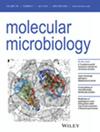chs基因在红曲霉细胞生长、菌丝形态、红曲霉色素和柑桔素合成调控中的多重作用
IF 2.6
2区 生物学
Q3 BIOCHEMISTRY & MOLECULAR BIOLOGY
引用次数: 0
摘要
甲壳素的生物合成与微生物的细胞生长和次生代谢有着复杂的联系。我们之前的研究已经评估了chs6基因在调节红曲霉孢子萌发、菌丝形态和红曲霉色素生物合成中的作用。然而,在这些情况下,其他chs基因的功能在很大程度上仍未被探索。chsG、chsA、chs5和chs2基因在M. purpureus M183中过表达,以评估它们对细胞生长、红曲霉色素(Monascus色素,MPs)和柑桔素生物合成的不同影响。结果表明,chsG过表达的影响最为显著,特别是在抑制跨膜分泌的同时增加了MPs和citrinin的合成。形态学分析表明,过表达这些chs基因后,m.s purpureus M183的菌丝长度明显减少。此外,与M. purpureus M183相比,这些突变体的菌丝球表面在SBF过程中表现出更絮状和粗糙的纹理。值得注意的是,M. purpureus e:chsG的特点是菌丝明显粗大,细胞壁致密,细胞质较暗。RT - qPCR结果显示,chsG mRNA水平在紫癜分枝杆菌中升高了11.9倍,chs5和chsA基因的个体过表达引起了chsG mRNA水平的显著升高。比较转录组分析揭示了MPs、柠檬酸、脂肪酸和氨基酸代谢的生物合成途径以及形态调节和生长相关基因的表达模式发生了深刻的变化,包括几丁质和麦角甾醇生物合成途径、MAPK信号途径、全局转录因子和过氧化物酶体。本文章由计算机程序翻译,如有差异,请以英文原文为准。
Multifaceted Roles of chs Genes in Regulating Cell Growth, Mycelial Morphology, Monascus Pigments and Citrinin Biosynthesis in Monascus purpureus
Chitin biosynthesis is intricately linked to the cellular growth and secondary metabolism of microorganisms. Our previous research has evaluated the role of the chs6 gene in modulating spore germination, mycelial morphology, and Monascus pigment biosynthesis in M. purpureus chs genes in theses contexts remain largely unexplored. The genes chsG , chsA , chs5 , and chs2 were overexpressed in M. purpureus Monascus pigments (MPs) and citrinin biosynthesis. The results indicated that chsG overexpression had the most significant effects, particularly enhancing MPs and citrinin synthesis while inhibiting transmembrane secretion. Morphological analysis revealed a substantial reduction in the length of mycelium of M. purpureus chs genes. Furthermore, the surface of the mycelium pellets from these mutants displayed a more flocculent and roughened texture during SBF compared to M. purpureus M. purpureus chsG was characterized by conspicuously bolder mycelia, a denser cell wall, and darker cytoplasm. RT‐qPCR results demonstrated that the chsG mRNA level increased by 11.9‐fold in M. purpureus chsG , and the individual overexpression of the genes chs5 and chsA triggered notable elevations in the chsG mRNA level. A comparative transcriptome analysis uncovered profound alterations in the expression patterns of genes associated with biosynthetic pathways of MPs, citrinin, fatty acid, and amino acid metabolism, as well as morphological regulation and growth, including the chitin and ergosterol biosynthetic pathways, MAPK signal pathway, global transcription factors, and peroxisomes.
求助全文
通过发布文献求助,成功后即可免费获取论文全文。
去求助
来源期刊

Molecular Microbiology
生物-生化与分子生物学
CiteScore
7.20
自引率
5.60%
发文量
132
审稿时长
1.7 months
期刊介绍:
Molecular Microbiology, the leading primary journal in the microbial sciences, publishes molecular studies of Bacteria, Archaea, eukaryotic microorganisms, and their viruses.
Research papers should lead to a deeper understanding of the molecular principles underlying basic physiological processes or mechanisms. Appropriate topics include gene expression and regulation, pathogenicity and virulence, physiology and metabolism, synthesis of macromolecules (proteins, nucleic acids, lipids, polysaccharides, etc), cell biology and subcellular organization, membrane biogenesis and function, traffic and transport, cell-cell communication and signalling pathways, evolution and gene transfer. Articles focused on host responses (cellular or immunological) to pathogens or on microbial ecology should be directed to our sister journals Cellular Microbiology and Environmental Microbiology, respectively.
 求助内容:
求助内容: 应助结果提醒方式:
应助结果提醒方式:


